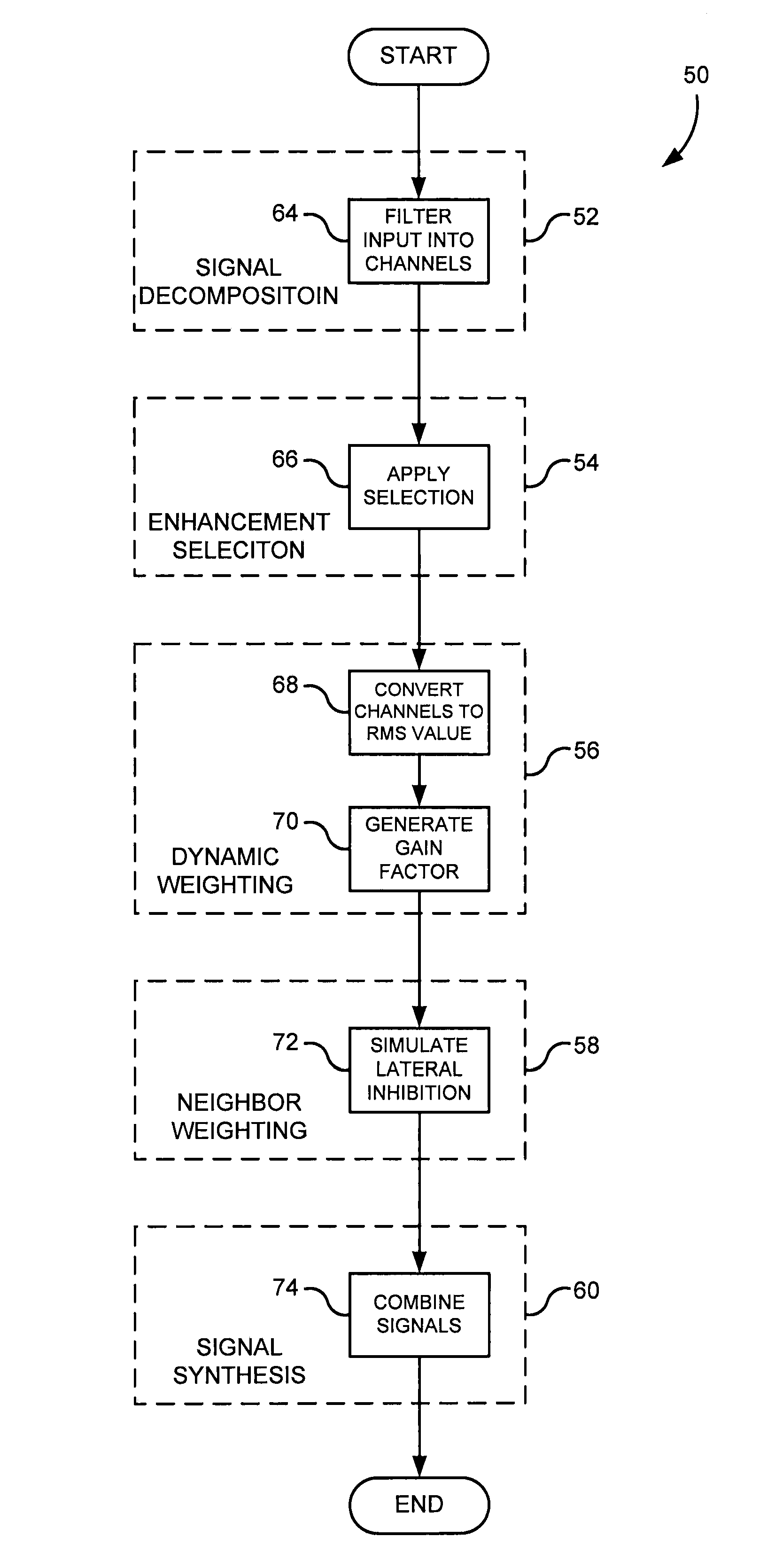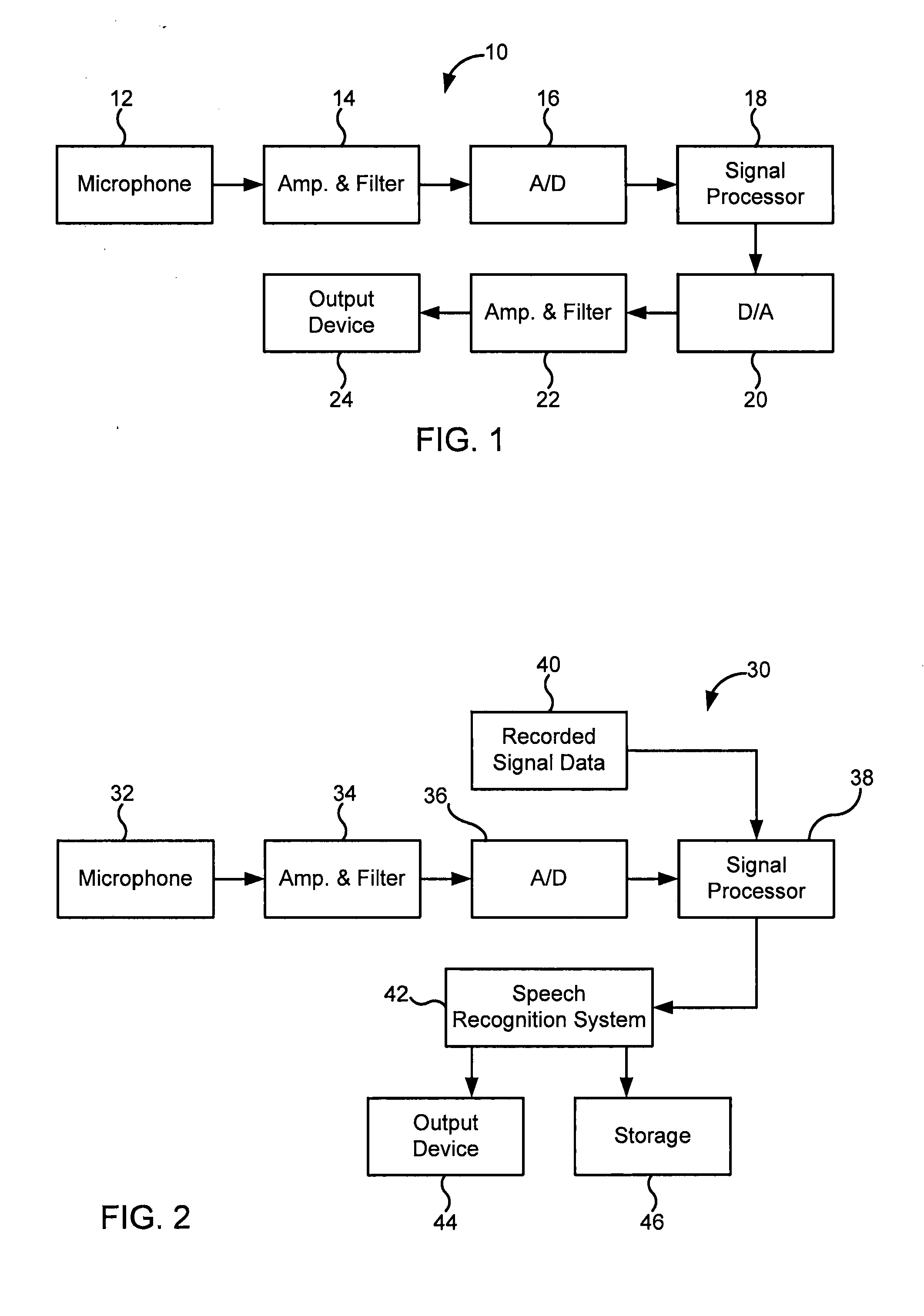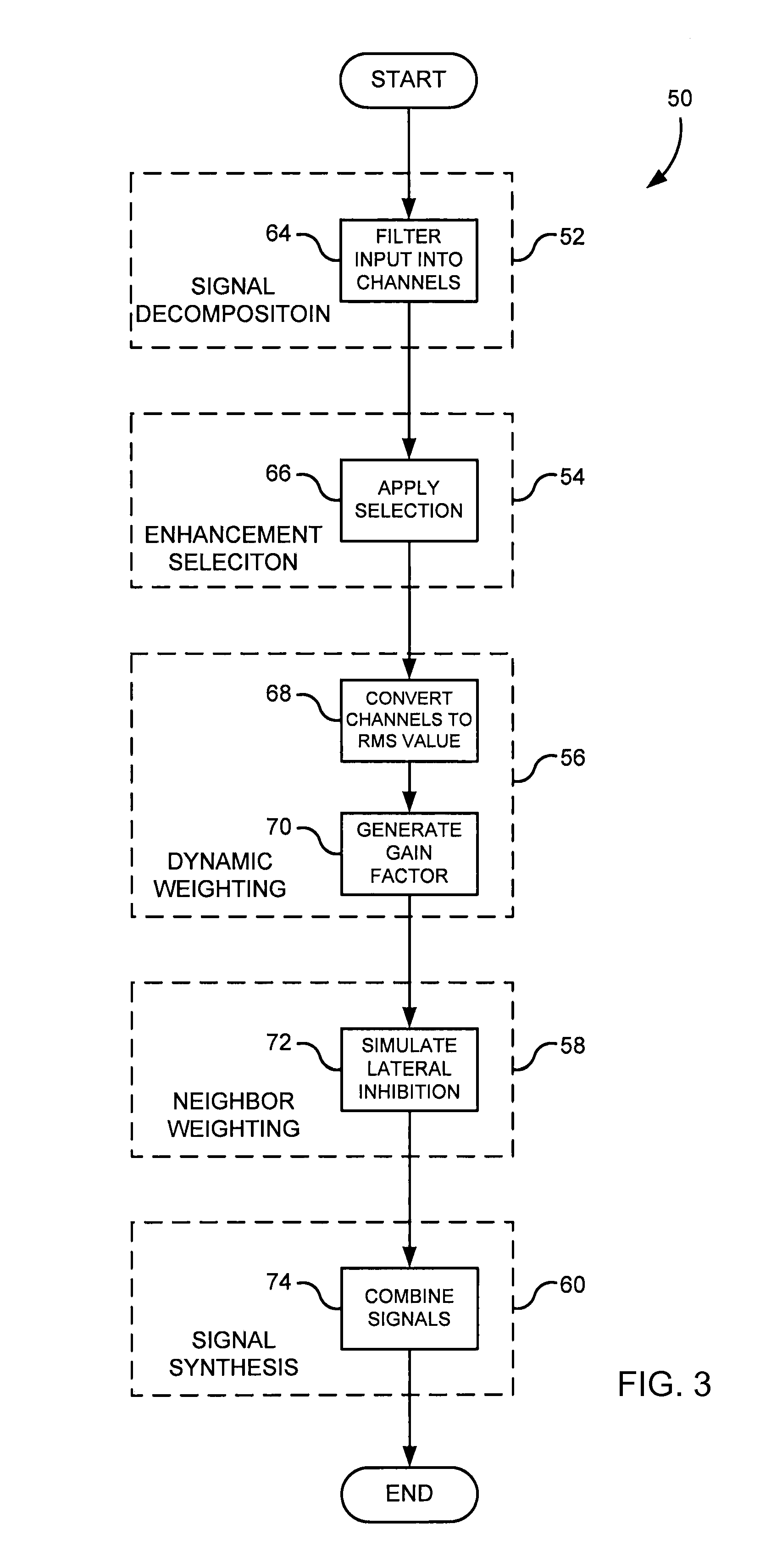Despite the plethora of
signal processing advancements related to audio signals, the processing of audio signals including or created as part of oral communications and, particularly, human speech remains a substantial challenge.
These limits are due, at least in part, to the complexities of human speech and a limited understanding of natural auditory and cognitive processing capabilities.
For example, the ability to recover speech information, despite dramatic articulatory and acoustic assimilation and coarticulation of
speech sounds, poses substantial hurdles to enhancement of speech signals and automated processing of the underlying information communicated in speech.
These hurdles are further compounded when, for example, the individual receiving the speech signals has an impairment.
When multiplied by the number of American workers with
hearing loss, the magnitude of total annual lost income is staggering.
The first is a loss of sensitivity, which results in an attenuation of speech.
The second component of SNHL is a loss of selectivity, which results in a blurring of spectral detail, or
distortion.
Unfortunately, due to this second component of SNHL, simple amplification of speech does not necessarily improve the listeners' ability to discern the information conveyed in the speech.
Due to substantial research, it is now established that listeners with SNHL often have compromised access to frequency-specific information because spectral detail is often smeared, or blurred, by broadened auditory filters.
Loss of sharp tuning in auditory filters generally increases with degree of sensitivity loss and is due, in part, to a loss or absence of
peripheral mechanisms responsible for suppression.
Not only are spectral peaks harder to resolve in
noise due to reduced amplitude differences between peaks and valleys, but their internal representation is spread out over wider frequency regions (smeared), resulting in less precise
frequency analysis, blurring between frequency varying
formant patterns, and ultimately in greater confusions between sounds with similar spectral shapes.
Unfortunately, in this effort, hearing aids can increase the blurring of detailed frequency information by reducing internal representations of spectral contrast in at least three ways: 1) high output levels; 2) positive spectral tilt; and 3) compression (decreased
dynamic range).
First, it is well known that auditory
filter tuning is level dependent.
However, it has been indicated that positive spectral tilt for NH listeners actually reduces the internal representation of higher frequency formants and increases the need for greater spectral contrast.
It is likely that negative effects of increased spectral tilt in NH listeners are exacerbated in HI listeners with already poor auditory
filter tuning and reduced / absent mechanisms for suppression.
Third, it has long been suspected that multichannel compression in hearing aids, which is designed to accommodate different dynamic ranges of audible speech with frequency, has the potential to reduce spectral contrast and flatten the spectrum, especially when there are many
independent channels and / or high compression ratios.
Notably, several studies have found that compression across many
independent channels increases errors for consonants differing in place of articulation, which can be highly influenced by subtle changes in spectral shape.
Unfortunately, these processing strategies do not adequately address the challenges of listeners with mild SNHL who experience reductions in spectral contrast as a consequence to the intensity manipulations of the processing, nor the challenges of listeners with
moderate to severe hearing loss who suffer from additional reductions in spectral contrast and increased
distortion arising from cochlear damage and broadened auditory filters.
Furthermore, a limited number of useable electrodes (typically, between 6 and 22) are available to CI listeners, who most often cannot take full
advantage of even this limited spectral information provided by their
electrode arrays.
Limited use of available spectral detail in patterns of stimulation from the CI processor is likely due to the reduced specificity of stimulation attributable to current spread, and to decreased survival and function of
spiral ganglion cells.
As with
hearing aid users, transient burst onsets and rapid
formant frequency changes that distinguish consonants differing in place of articulation are most troublesome for CI listeners.
CI listeners largely rely on relative differences in across-channel amplitudes to detect
formant frequency information, and this is especially problematic when there is competing
noise or a small number of effective channels.
Furthermore, because nonlinear processes are abolished either by the impairment itself or by placement of the
electrode array, natural spectral enhancement is also lost.
 Login to View More
Login to View More  Login to View More
Login to View More 


